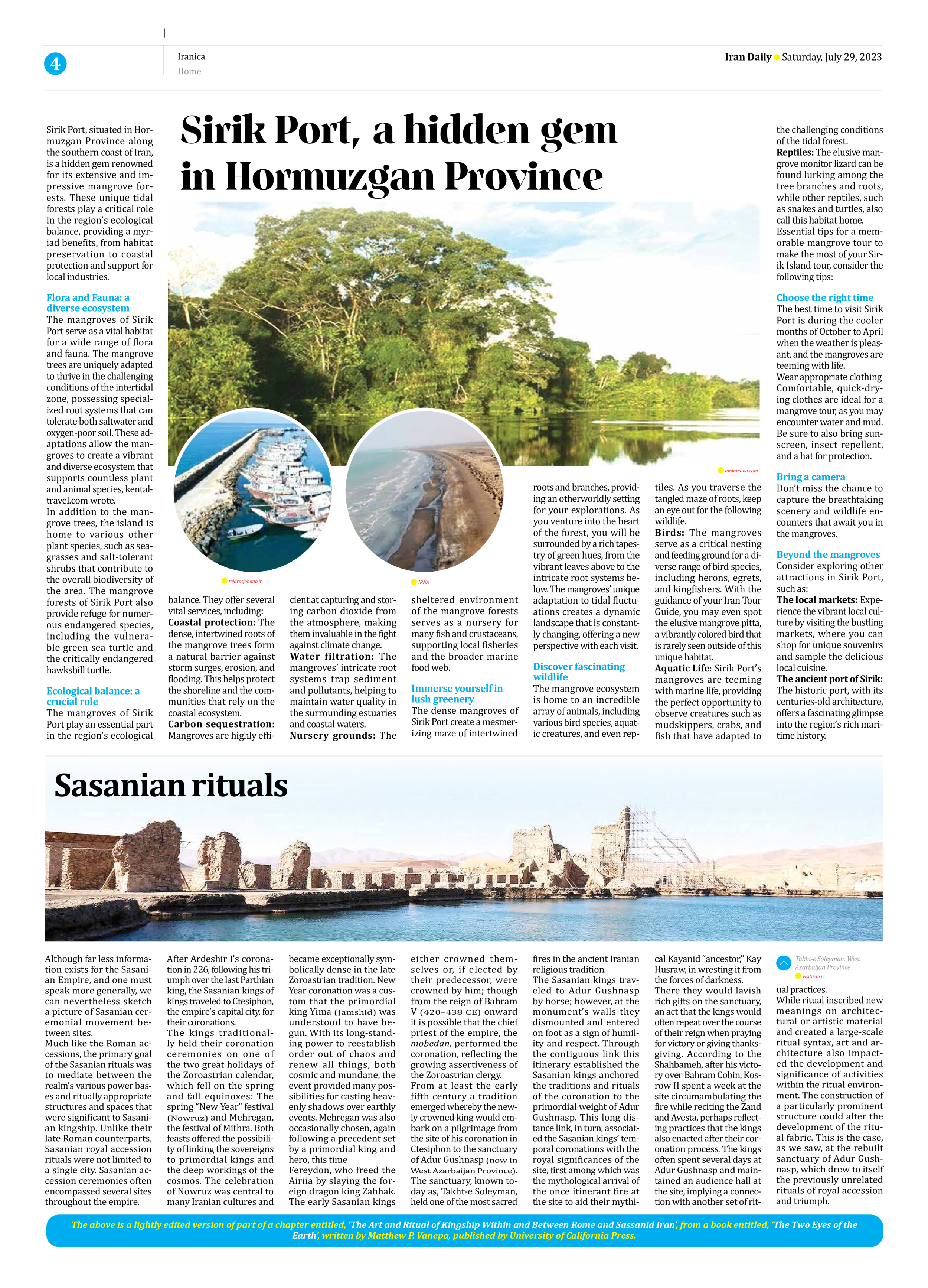
Sasanian rituals
Although far less information exists for the Sasanian Empire, and one must speak more generally, we can nevertheless sketch a picture of Sasanian ceremonial movement between sites.
Much like the Roman accessions, the primary goal of the Sasanian rituals was to mediate between the realm’s various power bases and ritually appropriate structures and spaces that were significant to Sasanian kingship. Unlike their late Roman counterparts, Sasanian royal accession rituals were not limited to a single city. Sasanian accession ceremonies often encompassed several sites throughout the empire.
After Ardeshir I’s coronation in 226, following his triumph over the last Parthian king, the Sasanian kings of kings traveled to Ctesiphon, the empire’s capital city, for their coronations.
The kings traditionally held their coronation ceremonies on one of the two great holidays of the Zoroastrian calendar, which fell on the spring and fall equinoxes: The spring “New Year” festival (Nowruz) and Mehregan, the festival of Mithra. Both feasts offered the possibility of linking the sovereigns to primordial kings and the deep workings of the cosmos. The celebration of Nowruz was central to many Iranian cultures and became exceptionally symbolically dense in the late Zoroastrian tradition. New Year coronation was a custom that the primordial king Yima (Jamshid) was understood to have begun. With its long-standing power to reestablish order out of chaos and renew all things, both cosmic and mundane, the event provided many possibilities for casting heavenly shadows over earthly events. Mehregan was also occasionally chosen, again following a precedent set by a primordial king and hero, this time
Fereydon, who freed the Airiia by slaying the foreign dragon king Zahhak. The early Sasanian kings either crowned themselves or, if elected by their predecessor, were crowned by him; though from the reign of Bahram V (420–438 CE) onward it is possible that the chief priest of the empire, the mobedan, performed the coronation, reflecting the growing assertiveness of the Zoroastrian clergy.
From at least the early fifth century a tradition emerged whereby the newly crowned king would embark on a pilgrimage from the site of his coronation in Ctesiphon to the sanctuary of Adur Gushnasp (now in West Azarbaijan Province). The sanctuary, known today as, Takht-e Soleyman, held one of the most sacred fires in the ancient Iranian religious tradition.
The Sasanian kings traveled to Adur Gushnasp by horse; however, at the monument’s walls they dismounted and entered on foot as a sign of humility and respect. Through the contiguous link this itinerary established the Sasanian kings anchored the traditions and rituals of the coronation to the primordial weight of Adur Gushnasp. This long distance link, in turn, associated the Sasanian kings’ temporal coronations with the royal significances of the site, first among which was the mythological arrival of the once itinerant fire at the site to aid their mythical Kayanid “ancestor,” Kay Husraw, in wresting it from the forces of darkness.
There they would lavish rich gifts on the sanctuary, an act that the kings would often repeat over the course of their reign when praying for victory or giving thanksgiving. According to the Shahbameh, after his victory over Bahram Cobin, Kosrow II spent a week at the site circumambulating the fire while reciting the Zand and Avesta, perhaps reflecting practices that the kings also enacted after their coronation process. The kings often spent several days at Adur Gushnasp and maintained an audience hall at the site, implying a connection with another set of ritual practices.
While ritual inscribed new meanings on architectural or artistic material and created a large-scale ritual syntax, art and architecture also impacted the development and significance of activities within the ritual environment. The construction of a particularly prominent structure could alter the development of the ritual fabric. This is the case, as we saw, at the rebuilt sanctuary of Adur Gushnasp, which drew to itself the previously unrelated rituals of royal accession and triumph.
The above is a lightly edited version of part of a chapter entitled, ‘The Art and Ritual of Kingship Within and Between Rome and Sassanid Iran’, from a book entitled, ‘The Two Eyes of the Earth’, written by Matthew P. Vanepa, published by University of California Press.







